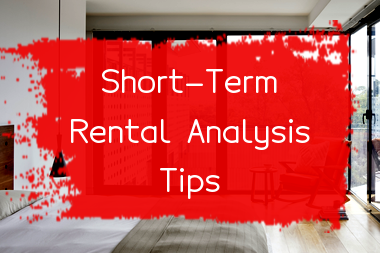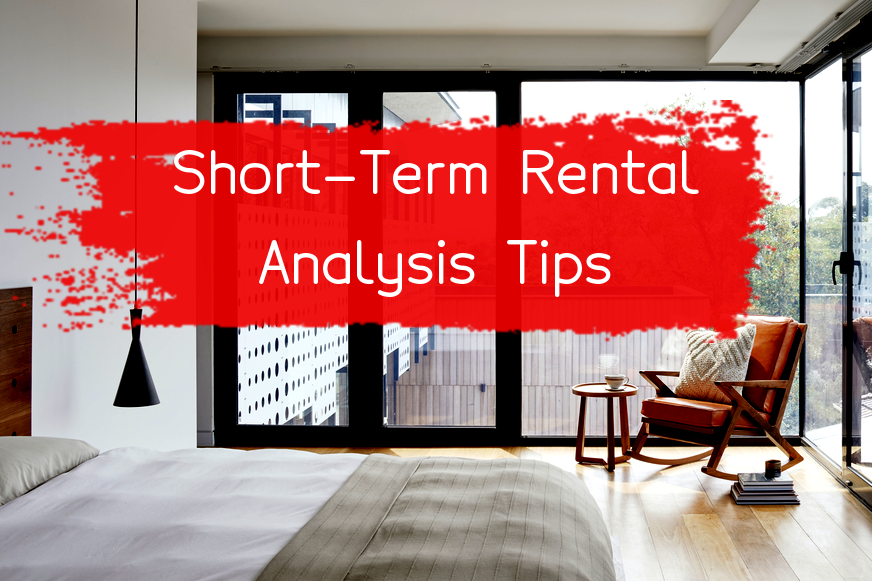What is Short-term Rental Analysis, and Why is it Important?
Short-term rental analysis (STRA) is the process of evaluating the feasibility of renting out a property on a short-term basis, typically on platforms such as Airbnb or Vrbo. It involves assessing the current market trends, demand, supply, competition, and potential revenue streams to make an informed decision about whether or not to rent out a property on a short-term basis.
STRA involves a thorough analysis of factors that may impact the success of short-term rentals, such as legal restrictions, zoning regulations, seasonal demand fluctuations, and local competition. The analysis also includes a review of the cost-benefit analysis of short-term rentals, including the expected revenue, rental expenses, insurance costs, and taxes.
The importance of STRA lies in the fact that it helps property owners to understand the potential financial benefits of short-term rentals. It also helps property owners to identify the risks associated with short-term rentals and make informed decisions about the use of their property.
Additionally, STRA helps property owners to develop realistic expectations about the rental income they can generate through short-term rentals. This is especially relevant for those who are considering purchasing a property for the sole purpose of renting it out on a short-term basis.
In summary, STRA is an essential tool for individuals who want to rent out their property on a short-term basis. It helps them to gather the necessary information to make informed decisions and maximize the potential benefits of their investment.
What Is Seasonality In An STR Analysis?
Seasonality in an STR (short-term rental) analysis refers to the cyclical fluctuations in demand for rental properties over the course of a year. These fluctuations are typically driven by factors such as weather patterns, holidays, and other cultural or societal events.
In the context of real estate, seasonality can have a significant impact on property values, rental rates, and vacancy rates. For example, vacation rental properties located in coastal areas may experience a surge in demand during the summer months, while properties located in ski resorts may be more popular during the winter months.
To effectively analyze seasonality in an STR market, analysts must collect and analyze data on rental rates, occupancy rates, and other relevant metrics over a period of several years. This data can then be used to develop trends and patterns that allow investors and property owners to make informed decisions about pricing, marketing, and other key factors that can affect their properties' financial performance.
In some cases, seasonality may also be influenced by macroeconomic factors such as the overall state of the economy or changes in consumer behavior. For example, an economic downturn may lead to reduced demand for luxury vacation rentals, while an increase in eco-tourism may make properties with sustainable features more attractive to travelers.
Overall, understanding seasonality is critical for anyone looking to invest in or manage STR properties, as it can provide valuable insights into market dynamics, consumer behavior, and other factors that can impact financial performance.
How To Analyze A Short-Term Rental Market
- 1Research the demand: The first step in analyzing the short-term rental market is to research the demand. You need to ask yourself several questions such as:
- What type of accommodation is most in demand (apartment, villa, house, etc.)?
- At what time of year is there a high demand?
- What are the main reasons why people visit the area? (e.g. leisure, business, events, etc.)
- 2Identify competitors: Once you have established the demand for short-term rentals in your area, it's important to identify your competitors. Look at:
- how much they charge per night
- how many properties they have in the area
- their reviews on Airbnb or other rental platforms
- their marketing strategies
- 3Investigate pricing: The price you charge for your property is key to attracting renters. Check how much your competitors charge, but also other essential factors such as:
- Cost per night
- Security deposit
- Discounts for longer stays
- Rental seasonality
- 4Identify special features about your property: Identify what special features your property has which your competitors don't offer. Some special features include:
- Location
- Amenities (pool, gym, BBQ area, free Wi-Fi)
- House size
- Budget and property quality
- 5Plan your marketing strategy: To attract potential renters, you need to be strategic in your online posts. Create a responding website for your property. Create a social media account to share your unique photos and experiences while staying in your property. Additionally, use online listings platforms like Airbnb, VRBO, Trip advisor, Homeaway to advertise your rental.
In conclusion, there are several key steps to analyzing the short-term rental market effectively. With a detailed understanding of the demand for short-term rentals in your area and strategic planning, you can maximize your rental's revenue and quality ranking.
Tools To Help Analyze a Short-term Rental Market
Before investing in a short-term rental property, it's essential to analyze the local market to determine the feasibility of your investment. Fortunately, several tools are available to help you analyze the short-term rental market.
- 1AirDNA: AirDNA is one of the most popular tools for analyzing the short-term rental market. It gathers data from Airbnb, Vrbo, and other platforms to provide investors with a detailed understanding of the market's supply and demand dynamics. It provides users with information on occupancy rates, pricing trends, and the revenue potential for a given location.
- 2Mashvisor: Mashvisor is a real estate analytics platform that uses AI to analyze short-term rental data. It helps investors to find rental properties based on their investment goals and provides information on the expected returns, including rental income, cash flow, and occupancy rates. It also offers insights into local housing markets, including competition analysis, property evaluations, and investment property potential analysis.
- 3Airdna MarketMinder: Airdna MarketMinder is another solution from the AirDNA family of products. It's a real-time market analysis tool that provides comprehensive insights into short-term rental markets. The platform provides users with data such as demand trends, average daily rates, occupancy rates, and revenue per available rental.
- 4Transparent: Transparent is a powerful tool that provides investors with deep insights into market performance. It provides information on rental demand, rates, and revenue potential using its proprietary analytics and algorithms. Users can filter data by the types of properties, locations, and travel segments, and view them on a user-friendly dashboard.
- 5Inside Airbnb: Inside Airbnb is a free resource that allows users to analyze Airbnb listings and data. It provides users with data on occupancy rates, revenue, and the number of active listings in a particular area. It's a great tool for getting a quick overview of Airbnb's listing activity in a given neighborhood or city.
In conclusion, analyzing the short-term rental market is crucial for making informed investment decisions. Fortunately, plenty of tools can help you with the analysis process. The above tools are popular and offer various features that provide users with insights into property investment markets. With these tools, you can get real-time data on trends, forecasting, and competition analysis that can help you maximize your returns.
Estimating Expenses In An STR Market Analysis
To estimate expenses in an STR (short-term rental) market analysis as it relates to real estate, there are several key factors to consider:
- 1Property acquisition: The first expense to consider is the cost of acquiring the property. This includes the purchase price, closing costs, and any other fees associated with the transaction.
- 2Financing: If the property is being financed, the interest rate and mortgage payment will need to be factored into the expenses.
- 3Property management: If the property is being rented out as a short-term rental, a property management company may be hired to handle bookings, cleaning, and maintenance. The cost of this service should be included in the expenses.
- 4Insurance: Short-term rental properties may require additional insurance to cover liability and damage caused by guests. The cost of this insurance should be factored into expenses.
- 5Utilities: The cost of utilities, such as electricity, water, and internet, should be included in the expenses. If these costs are not passed on to guests, they will need to be paid by the property owner.
- 6Maintenance and repairs: As with any property, maintenance and repair costs can add up quickly. It's important to budget for ongoing maintenance and repairs to ensure the property remains in good condition and continues to attract guests.
- 7Taxes: Depending on the location of the property, there may be additional taxes associated with short-term rentals. These taxes should be factored into the expenses.
Once these expenses have been estimated, it's important to compare them to the potential revenue from renting out the property as a short-term rental. This will help determine whether the investment is financially viable and can inform pricing decisions.
Just one more thing: if you liked the article, please like us on social media and share this article with friends.



